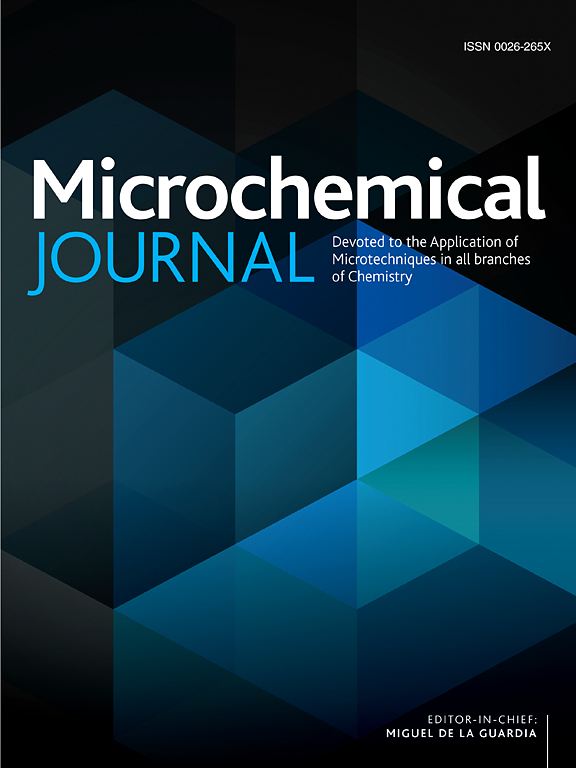A fast-response and high-sensitive 8-amidoquinoline-based fluorescent probe for naked-eye selective detection of Zn(II) and its photophysical and bioimaging applications
IF 4.9
2区 化学
Q1 CHEMISTRY, ANALYTICAL
引用次数: 0
Abstract
Zinc levels in living organisms and the environment are vital to human health and the environment. Therefore, rapid and highly sensitive methods for detecting Zn2+ are required. Herein, a novel fluorescent probe (APYQ) was synthesized by a simple Schiff base reaction. APYQ exhibited high selectivity to detect Zn2+ without interference from other metal ions. The limit of detection (LOD) as low as 1.87 nM, and response time as fast as 5 s. These two indicators had the best overall performance compared to other Zn2+ probes over the past five years. Single crystals of APYQ and APYQ-Zn2+ complex were successfully obtained, indicating that the fluorescence enhancement induced by the large conjugated rigid plane structure of the complex may rationalize the superb detection limit. The intramolecular charge transfer (ICT) and chelation-enhanced fluorescence (CHEF) mechanism was proposed based on Job’s plot, ESI-MS, NMR titration and DFT calculation. Moreover, APYQ possessed the capability to detect Zn2+ in water samples and test strips in a qualitative and quantitative manner. Furthermore, APYQ has been effectively used to detect Zn2+ intracellularly in Hela cells. This work provides a substantially enriched probe arsenal for the detection of Zn2+ with high sensitivity and fast response.

求助全文
约1分钟内获得全文
求助全文
来源期刊

Microchemical Journal
化学-分析化学
CiteScore
8.70
自引率
8.30%
发文量
1131
审稿时长
1.9 months
期刊介绍:
The Microchemical Journal is a peer reviewed journal devoted to all aspects and phases of analytical chemistry and chemical analysis. The Microchemical Journal publishes articles which are at the forefront of modern analytical chemistry and cover innovations in the techniques to the finest possible limits. This includes fundamental aspects, instrumentation, new developments, innovative and novel methods and applications including environmental and clinical field.
Traditional classical analytical methods such as spectrophotometry and titrimetry as well as established instrumentation methods such as flame and graphite furnace atomic absorption spectrometry, gas chromatography, and modified glassy or carbon electrode electrochemical methods will be considered, provided they show significant improvements and novelty compared to the established methods.
 求助内容:
求助内容: 应助结果提醒方式:
应助结果提醒方式:


